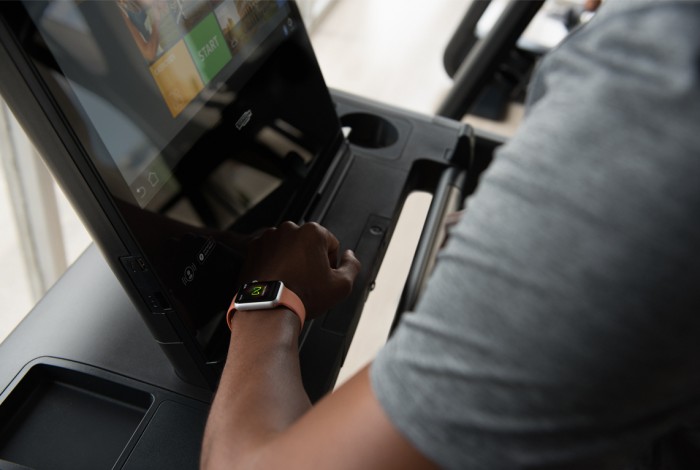How Apple’s Secretive Gym Is Shaping Its Activity-Tracking Algorithms

For several years now, Apple has operated a hush-hush fitness lab in an undisclosed location at its campus in Cupertino, California, and this week the company offered up a few details about how it’s studying all kinds of activities—on dry land and in water—in order to build algorithms for tracking them on the Apple Watch.
Jay Blahnik, Apple’s director of fitness for health technologies, said Tuesday that Apple believes the gym-like lab—which was built before the Apple Watch was released in 2015 and uses employee volunteers as guinea pigs—has now collected more biometric data than anyone else. It has also become the largest purchaser of metabolic carts, which are used to keep tabs on oxygen consumption; it now has 50 of these machines, he said, and half of them are portable so they can be used for activities like swimming and cycling. (And employees do use them, along with a security guard, for a daily bike ride, he added.)
The swimming happens in an indoor endless pool, and Blahnik said observations revealed that people don’t swim as well as they think they do. It turns out that even when people are pretty regular swimmers, it’s hard to measure a difference between, say, their crawl and breaststroke.
That’s not to say that everyone who comes into this data gym is going to partake in physical activity.
“One day you might show up and we’ll study how many calories you burn while you sit, because we need to understand that, too,” he said.
Blahnik spoke about Apple’s AI gym during a series of demos the company showed off to a small group of reporters in Los Angeles on Tuesday. The demos, presented by Apple itself and several outside developers, showed the Apple Watch’s newest and upcoming health and fitness capabilities—including a feature that wirelessly links the watch directly with a treadmill to track your workout, which will be available in the fall with the release of the new Apple Watch OS, WatchOS 4, and compatible gym equipment.
Keep Reading
Most Popular
Large language models can do jaw-dropping things. But nobody knows exactly why.
And that's a problem. Figuring it out is one of the biggest scientific puzzles of our time and a crucial step towards controlling more powerful future models.
How scientists traced a mysterious covid case back to six toilets
When wastewater surveillance turns into a hunt for a single infected individual, the ethics get tricky.
The problem with plug-in hybrids? Their drivers.
Plug-in hybrids are often sold as a transition to EVs, but new data from Europe shows we’re still underestimating the emissions they produce.
Stay connected
Get the latest updates from
MIT Technology Review
Discover special offers, top stories, upcoming events, and more.